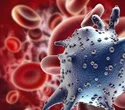New molecular insights reveal why some bladder cancers resist chemotherapy
About one quarter of patients with muscle-invasive bladder cancer (MIBC) may be treated and derive a benefit with the current standard chemotherapy. To better understand why some tumors resist chemotherapy and identify better ways to treat those cancers, researchers at Baylor College of Medicine have conducted a detailed molecular analysis of MIBC tumors. The results, published in Cell Reports Medicine, offer potential new ways to identify which patients will benefit from chemotherapy and reveal possible new treatment strategies.
"One of our goals was to identify molecular markers in patient tumors that would help us predict which patients were most likely to benefit from chemotherapy and which ones might not," said first co-author, Dr. Matthew V. Holt, director of the Lester and Sue Smith Breast Center Proteomics Laboratory at Baylor.
The researchers studied 60 MIBC tumor samples using a comprehensive multi-omics approach which included genomics (sequencing the genes of the tumor), transcriptomics (analyzing which genes are turned on or off), proteomics (the proteins produced by the tumor) and phosphoproteins (proteins with chemical tags that control their activity).
"We were excited about the findings," Holt said. "For instance, we investigated protein isoforms, which refers to slightly different forms of the same protein, which can behave differently. We found that certain isoforms – especially of proteins like ATAD1 and the RAF family – were more common in tumors that responded well to chemotherapy. These isoforms weren't detectable by looking at genes or RNA alone, highlighting the importance of studying proteins directly."
"We also identified molecular pathways linked to resistance," Dou said. "Wnt signaling, involving a protein called GSK3B, was more active in resistant tumors. The JAK/STAT pathway, especially the protein STAT3, was also more active in resistant cases. These data reveal these pathways as potential therapeutic targets to overcome chemoresistance."
The study also analyzed proteins targeted by antibody-drug conjugates (ADCs) – a new class of cancer drugs. Proteins like PD-L1, TROP2, and NECTIN-4 were found in different patterns across tumor subtypes. This suggests that combining ADCs with chemotherapy or immunotherapy could be more effective, especially if tailored to the tumor's subtype.
The researchers also compared the molecular profiles in patients who had both pre- and post-treatment samples and found changes. Some tumors changed their subtype after chemotherapy. They also found that certain proteins involved in cell recycling and energy use were more active after treatment, potentially helping the tumor survive.
"This study identified specific proteins and pathways linked to treatment resistance, as well as potential new ways to treat resistant tumors," said senior author, Dr. Seth P. Lerner, professor of urology and Beth and Dave Swalm Chair in Urologic Oncology. He also is the director of the Multidisciplinary Bladder Cancer Program at Baylor "This is important because it provides insights that can help expand the population that can be treated effectively and improve overall patient outcomes."
#ResearchChemistry, #ChemicalInnovation, #Science, #ScienceResearch, #ScientificResearch, #ResearchAndDevelopment, #ChemistryEducation, #ChemistryExperiments, #ChemistryLab, #ChemistryStudents, #ChemistryStudy, #OrganicChemistry, #InorganicChemistry, #PhysicalChemistry, #AnalyticalChemistry, #Biochemistry, #MaterialsChemistry, #TheoreticalChemistry, #AppliedChemistry, #MedicinalChemistry
Visit Our Website : researchchemistry.org
Nomination Link : researchchemistry.org/award-nomination/
Registration Link : researchchemistry.org/award-registration/
Member Link : researchchemistry.org/member-submission/
Contact Us: contact@researchchemistry.org
Social Media Links
Instagram : www.instagram.com/chemistryaward
Twitter : x.com/Chemistryaward
Pinterest : in.pinterest.com/chemistrymails




Comments
Post a Comment